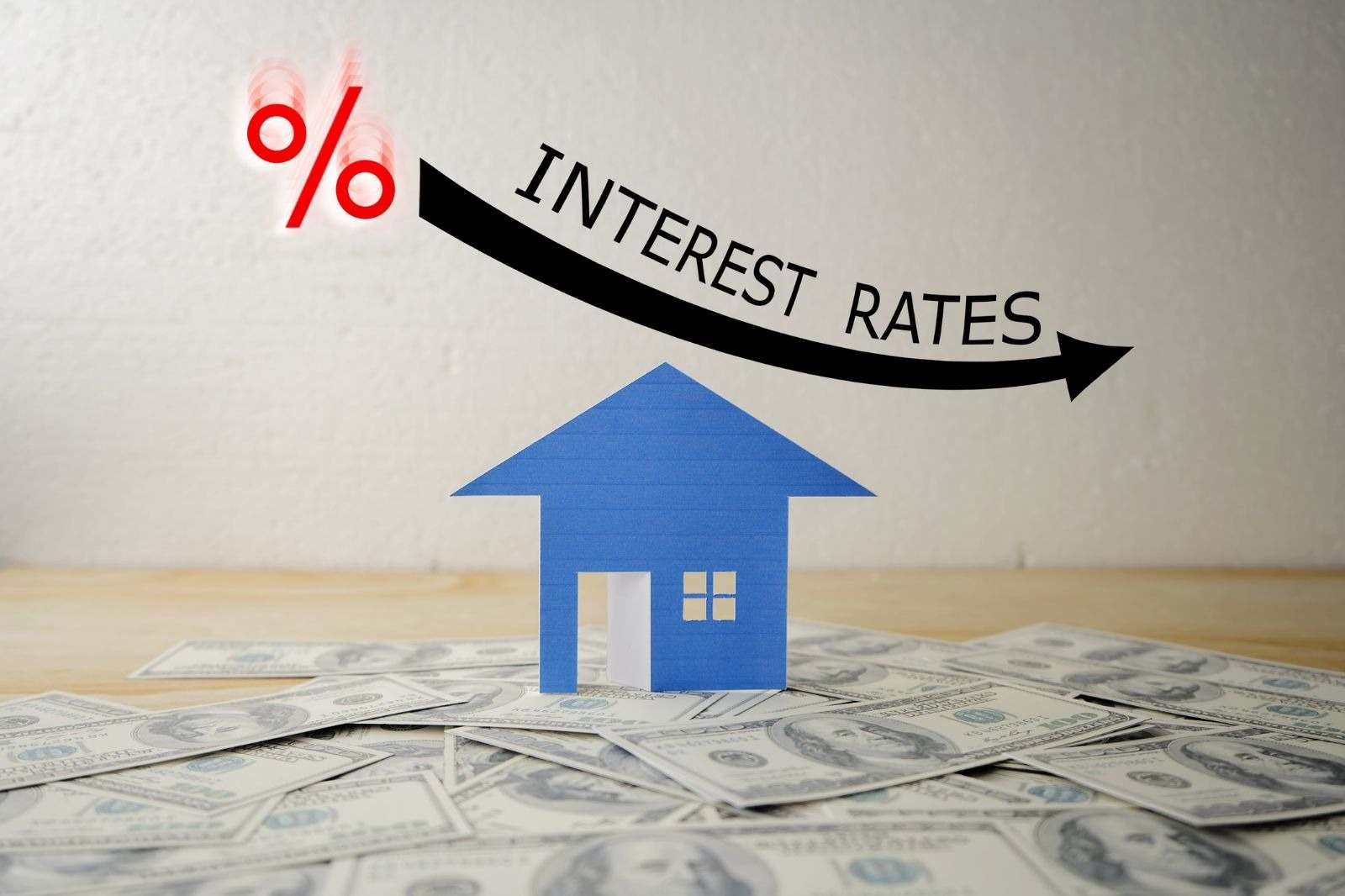A $400,000 Texas rental property that once delivered about $3,500 in annual tax savings can now generate more than $7,800 under OBBB’s updated rules, while also qualifying for lower loan rates and faster approvals. For investors, these changes are more than policy—they are tangible gains shaping real estate strategy across Texas.
When OBBB was announced, many asked what the bill truly means. The answer is clearer now: for Texas real estate, it affects borrowing costs, tax treatment, and project timelines that drive investment returns.”
For a single property, these changes strengthen cash flow. Across a portfolio, they create more capacity to expand and reinvest with fewer obstacles.

Similar dynamics are playing out in major Texas cities such as Houston, Dallas, Austin, San Antonio, and Corpus Christi, where OBBB is already influencing how returns are calculated, according to the U.S. Census Bureau. Investors who adjust their approach early are better positioned to capture opportunities that were harder to access just a year ago.
At Elysium Real Estate Investments, we focus on making policy shifts practical for investors by connecting them to the best real estate investment strategies for Texas. In the sections ahead, we’ll explain the specific provisions of OBBB, show before-and-after scenarios from Texas markets, and outline steps you can take to align your portfolio strategy for 2025 and beyond.
What’s Actually Changing?
OBBB introduces specific changes that directly affect how investors structure deals. These are central to OBBB real estate investment strategies Texas, combining financing, taxation, and regulation in a way that enhances investor flexibility.
Changes to Financing

With elevated borrowing costs in recent years, affordable capital has been a key hurdle in Texas residential real estate. OBBB addresses this by reducing costs, extending repayment options, and widening credit access in ways that matter to both new and seasoned investors:
- Interest Rate Incentives – Qualified borrowers can now secure loans at below-market rates, lowering monthly debt service and strengthening cash flow. This is especially impactful in competitive metros like Dallas and Austin, where margins are tighter.
- Longer Loan Terms with Flexibility – New 30-year repayment options with built-in refinancing opportunities allow investors to stabilize cash flow over time and adapt if rate conditions shift again. This flexibility is valuable in fast-growing markets like Austin, where rents and demand can change quickly.
- Expanded Credit Access – Investors who rely on rental income or self-employment earnings face fewer underwriting barriers, opening the door for first-time buyers in San Antonio and Corpus Christi, where entry-level price points create room for participation.
Bottom line for investors: With lower rates and expanded access to credit, new buyers can now enter markets previously beyond reach. Veteran investors, on the other hand, can refinance to unlock capital for acquisitions and upgrades—driving portfolio strength through Texas real estate investing.
New Tax Provisions

Tax treatment is where many investors will see the immediate benefits of OBBB. The bill reshapes how deductions and gains are applied, giving Texas investors more flexibility in managing cash flow and long-term returns:
- Bonus Depreciation – Improvements such as HVAC systems, roofing, and energy upgrades can now be written off in full during the first year instead of being spread over decades. For investors updating older housing stock in Houston or San Antonio, this accelerates tax savings while improving property quality.
- Expanded Property Improvement Deductions – A wider range of upgrades qualifies for accelerated write-offs, rewarding value-add strategies. Renovations in Dallas and Austin, where tenant demand favors modern amenities, now deliver faster financial benefits.
- Capital Gains Adjustments – Properties held for at least three years are now subject to more favorable IRS capital gains treatment. This encourages longer-term holds in growth areas like Austin’s tech corridor or Houston’s Energy Corridor, where appreciation potential strengthens with time.
Why this matters: For new investors, OBBB’s front-loaded deductions make the first years of ownership more cash-flow positive. For accredited investors, aligning renovation plans and hold periods with the updated provisions can significantly improve after-tax returns across larger portfolios, reinforcing the importance of Texas real estate tax benefits OBBB for investors seeking long-term efficiency.
Regulatory Updates

Regulatory reforms can be just as impactful as financing and tax changes. By reducing friction in approvals and expanding what can be built, OBBB helps Texas investors bring projects to market faster and with more flexibility:
- Faster Permitting – Approval timelines are being shortened, with some cities already cutting months from the process. This is especially valuable in Austin, where permitting backlogs have long slowed redevelopment, and in Houston, where faster approvals mean quicker turnover of older housing stock.
- Zoning Flexibility – Expanded allowances for higher-density and mixed-use projects create new opportunities in growth corridors. In Dallas, this supports infill developments that combine residential with retail or office uses, while in Corpus Christi, it encourages coastal projects that serve both residents and the tourism market.
- Incentive Alignment – Local governments can now more easily stack OBBB provisions with city-level abatements and housing incentives. For investors, this makes redevelopment in districts such as Houston’s inner loop or San Antonio’s downtown corridors more financially attractive.
How to use this: These changes reduce the time and cost of moving from acquisition to revenue. For new investors, that means less risk tied up in delays. For seasoned investors, it creates more flexibility to reposition properties and pursue mixed-use or redevelopment in Texas’ fastest-growing markets.
Before vs. After OBBB (Comparative Analysis)

| Metric | Before OBBB | After OBBB |
|---|---|---|
| Annual Tax Savings | About $3,500 under standard depreciation | About $7,800 with bonus depreciation and accelerated deductions |
| Loan Terms | 6.5% fixed, 20-year amortization | 5.2% fixed, 30-year term with refinancing flexibility |
| Permitting Timeline | 9–12 months for approvals | 5–7 months, with faster reviews and streamlined approvals |
| Projected First-Year ROI | ~7.5% |
~10.2% |
Why It Matters
- Tax Efficiency: For new investors, larger first-year deductions make it easier to offset costs and build positive cash flow.
- Financing Advantage: For portfolio investors, refinancing at lower rates frees capital that can be redeployed into acquisitions.
- Faster Execution: For developers and value-add investors in Austin or Houston, shorter permitting reduces holding costs and accelerates revenue.
- Overall ROI Impact: Together, these changes can lift expected returns by 30–40%, strengthening both single-property and portfolio performance.
Bottom Line for Investors
- New investors: OBBB lowers entry barriers with easier financing and early tax relief, making markets like Dallas and Austin more attainable.
- Accredited investors: Portfolio-wide refinancing, faster project timelines, and enhanced tax treatment create efficiency gains that compound across multiple properties.
How Investors Should Adapt: OBBB Real Estate Investment Strategies Texas

The advantages created by OBBB only matter if investors adjust their approach. Here’s a practical playbook for aligning Texas portfolios with the new provisions.
OBBB Investor Checklist
- Review Properties for Eligible Improvements
Identify upgrades such as HVAC, roofing, energy systems, or structural work that qualify for bonus depreciation. These projects improve tenant appeal and create immediate tax relief. - Reassess Financing Options
If you are holding older loans, consider refinancing under OBBB-supported terms. Lower rates and longer amortizations free up cash flow. For new investors, these products make markets like Dallas or Austin more achievable. - Target High-Demand Texas Markets
- Austin: Tech-driven growth and zoning updates support infill and mixed-use.
- Dallas: Suburban expansion and job creation sustain rental demand.
- Houston: Energy sector resilience drives steady workforce housing.
- San Antonio: Affordability and military/medical anchors create stable returns.
- Corpus Christi: Port activity and tourism fuel both long- and short-term rental demand.
- Leverage Faster Approvals and Zoning Flexibility
With permitting timelines cut by months and mixed-use approvals broadened, projects can reach the market faster, reducing holding costs and expanding redevelopment opportunities. - Align Hold Periods with Tax Advantages
Capital gains adjustments reward three-year holds. Plan exits strategically, whether by holding longer to capture benefits or staggering sales across a portfolio for consistent cash flow.
Texas Market Impact

OBBB is reshaping how capital flows into Texas residential real estate. While each metro feels the impact differently, the common theme is stronger investor participation supported by easier financing, faster approvals, and improved tax treatment.
- Houston – OBBB incentives are fueling acquisitions of older single-family homes and speeding redevelopment in the Energy Corridor and inner-loop.
Expectation: Steady workforce housing demand and healthier rental supply.
- Austin – Zoning flexibility makes mixed-use and higher-density projects easier to advance.
Expectation: Rising demand for rentals and infill opportunities near employment hubs.
- Dallas – Expanded credit access brings new investors into suburban corridors, while accredited investors refinance portfolios to fund build-to-rent communities.
Expectation: Continued suburban expansion and strong rental absorption.
- San Antonio – Affordable entry points and stable demand from military and medical employers attract first-time investors and support redevelopment.
Expectation: Steady rental growth with moderate volatility.
- Corpus Christi – Port activity and tourism drive dual demand for workforce and vacation rentals. Faster permitting and zoning flexibility encourage coastal development.
Expectation: Stronger balance of long- and short-term rentals.
Statewide Outlook
- Increase investor participation by lowering financing barriers.
- Accelerate redevelopment with faster permitting.
- Support long-term portfolio growth with improved tax treatment.
Together, these changes reinforce Texas as one of the most resilient residential real estate markets in the country.
[Invitation to Mini-Series]
With OBBB transforming Texas real estate, now is the time to refine your investment strategy. We warmly invite you to explore our Texas Real Estate Investment Mini-Series, crafted by Elysium Real Estate Investments to empower both new and seasoned investors with actionable insights:
- “The ‘Big Beautiful Bill’ and Your Portfolio: New Tax Advantages for Residential Real Estate” provides a comprehensive overview of OBBB’s tax benefits, showing how to boost cash flow and portfolio efficiency across Texas markets.
- “Maximizing OBBB Tax Benefits: A Step-by-Step Guide for Texas Investors” details how to leverage deductions for maximum tax efficiency in markets like Austin and Houston. (Link to be added once published)
- “Navigating OBBB’s Financing and Regulatory Changes in Texas” offers expert strategies to secure favorable loans and capitalize on streamlined permitting and zoning opportunities. (Link to be added once published)
This mini-series translates OBBB’s complex changes into clear, practical steps. We encourage you to dive into these resources to stay ahead in Texas’ dynamic real estate market for 2025 and beyond.
Conclusion: Turning Policy Into Strategy
OBBB is already reshaping the landscape for Texas residential investors by lowering borrowing costs, front-loading tax advantages, and shortening project timelines. These shifts are influencing how deals are structured, how portfolios are managed, and how quickly projects move from acquisition to revenue.
For new investors, the environment is more accessible, with favorable financing and real estate tax benefits OBBB Texas helping ease entry into competitive markets. For accredited investors, the focus shifts to optimization—refinancing existing holdings, redeploying capital, and accelerating redevelopment.
In practice, these changes highlight the importance of well-defined residential real estate investment strategies in Texas. At Elysium Real Estate Investments, we help clients apply policy updates as actionable plans, guiding them through OBBB Texas residential real estate strategies with market insight, financial modeling, and execution support designed to maximize returns and minimize risk.
Legal Disclaimer: The information in this article, “Beyond the Hype: How the OBBB is Reshaping Residential Real Estate Investment Strategies in Texas,” is provided for educational purposes only and should not be considered financial, legal, or investment advice. Real estate investing carries inherent risks, including market fluctuations, regulatory changes, economic uncertainties, and financial challenges.
Elysium Real Estate Investments does not guarantee specific outcomes or returns related to the strategies discussed in this article. Readers are strongly encouraged to perform their own due diligence and seek guidance from qualified financial advisors, legal professionals, or tax experts before making investment decisions.
Elysium Real Estate Investments and its affiliates are not responsible for any financial losses, tax implications, or legal consequences resulting from reliance on the information presented here. Past performance is not indicative of future results.














